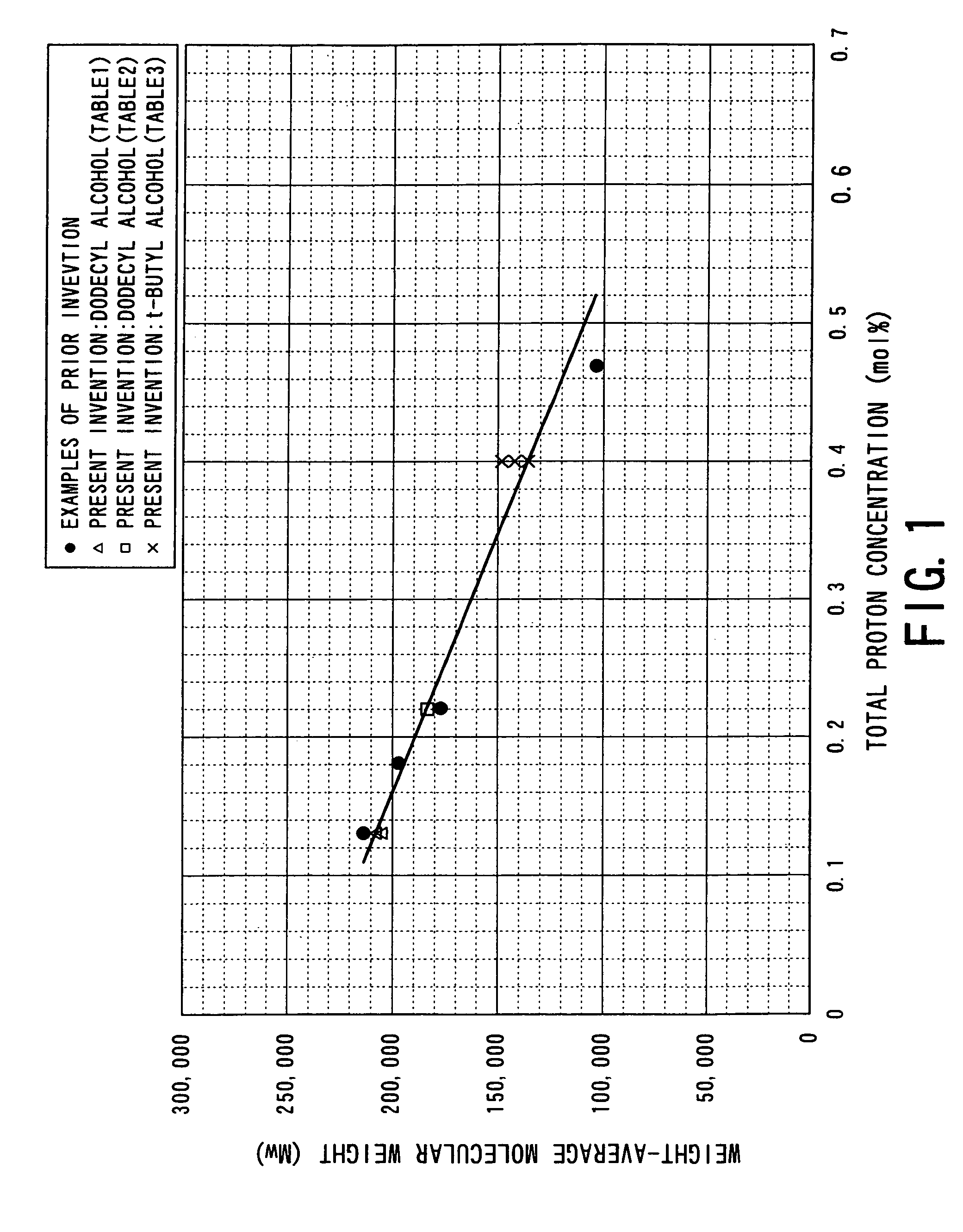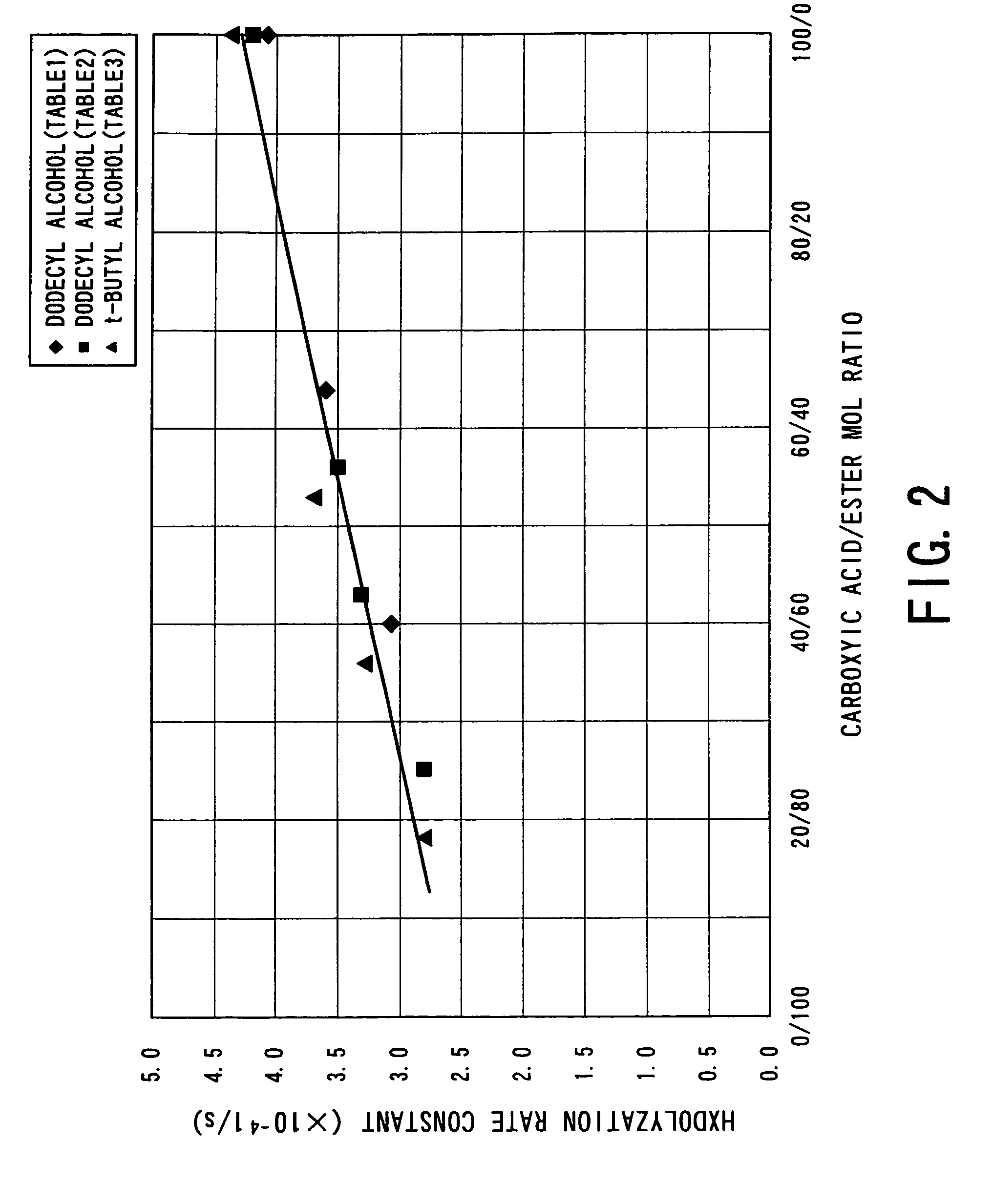Process for producing aliphatic polyester
a technology of aliphatic polyester and aliphatic polymer, which is applied in the direction of physical/chemical process catalysts, organic compound/hydride/coordination complex catalysts, gas-gas reaction processes, etc., can solve the problem of affecting the polymerization reaction, unable to achieve targeting, and unable to remove impurities as a certain limit is faced, so as to promote the utilization of aliphatic polyester
- Summary
- Abstract
- Description
- Claims
- Application Information
AI Technical Summary
Benefits of technology
Problems solved by technology
Method used
Image
Examples
examples
[0059]The present invention will hereinafter be described more specifically by the following Syntheses Examples, Examples and Comparative Examples. Analyzing methods, measuring methods, calculating methods, etc. are as follows:
(1) Impurity Determining Analysis:
[0060]A precisely weighed amount (ca. 1 g) of glycolide and 25 mg of 4-cholorobenzophenone as an internal standard substance were added into 10 ml of high-purity acetone and sufficiently dissolved therein. Ca. 1 ml of the resultant solution was taken out, and an ethyl ether solution of diazomethane was added to the solution. The diazomethane solution was added in an amount of leaving a yellow color of diazomethane as an approximate measure. The yellow-colored solution (2 μl) was charged into a gas chromatograph to determine methyl-esterified glycolic acid and a glycolic acid dimmer on the basis of an area ratio of the internal standard substance and the amounts of the glycolide and internal standard substance added.
[0061]Appar...
synthesis example 2
Monomer Synthesis Example 2
[0106]A condensate was obtained in the same manner as in Synthesis Example 1 except that the solubilizing agent was changed from polyethylene glycol to octyltetratriethylene glycol. The condensate was received by a receiver having a jacket through which hot water was circulated. The condensate within the receiver was separated into 2 liquid layers, in which an upper layer was the solvent, and a lower layer was liquid glycolide. Even after the 2 layers were formed, the depolymerization reaction was continued, and the co-distillation was continued. As a result, glycolide cooled by the condenser was passed in the form of droplets through the solvent layer and merged by condensation within the lower glycolide layer. The upper solvent layer was continuously returned to the reaction vessel for the purpose of keeping the amount of the solvent in the reaction mixture constant. The pressure of the reaction system was temporally returned to atmospheric pressure to t...
PUM
| Property | Measurement | Unit |
|---|---|---|
| wt. % | aaaaa | aaaaa |
| wt. % | aaaaa | aaaaa |
| acid value | aaaaa | aaaaa |
Abstract
Description
Claims
Application Information
 Login to View More
Login to View More - R&D
- Intellectual Property
- Life Sciences
- Materials
- Tech Scout
- Unparalleled Data Quality
- Higher Quality Content
- 60% Fewer Hallucinations
Browse by: Latest US Patents, China's latest patents, Technical Efficacy Thesaurus, Application Domain, Technology Topic, Popular Technical Reports.
© 2025 PatSnap. All rights reserved.Legal|Privacy policy|Modern Slavery Act Transparency Statement|Sitemap|About US| Contact US: help@patsnap.com


